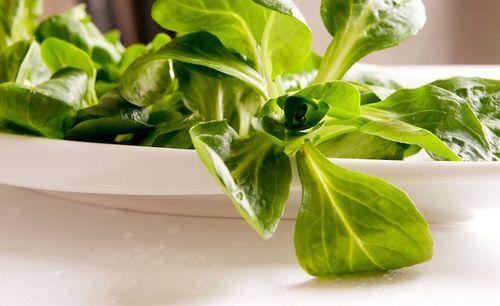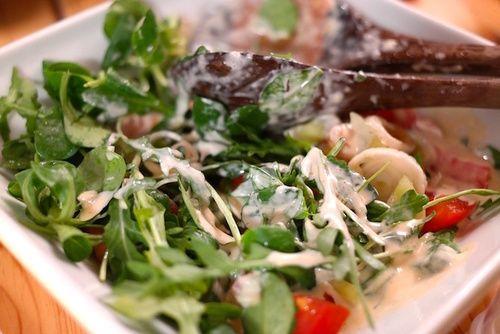The songino it is a very common salad on our tables. It has a very low energy intake, is rich in fiber, vitamins and minerals, and is useful in the prevention of anemia and arteriosclerosis. Let's find out better.
> 1. Description of the song
> 2. Properties and benefits of the songino
> 3. Calories and nutritional values of the songino

Description of the songino
The Songino (Valerianella olitoria) belongs to the Chicory family. It is a herbaceous plant that grows spontaneously in meadows and sandy soils, but is also grown in vegetable gardens. THE fiori are white or blue and the leaves small, oval and fleshy basals arranged in a rosette.
Properties and benefits of the songino
Among the beneficial properties of the songino are the prevention of anemia and the prevention of arteriosclerosis. The songino, in fact, thanks to its strengthening action of the capillaries and the facilitation of blood circulation, prevents cardiovascular diseases.
This property, beneficial for the heart, is given by presence of B-complex vitamins, substances that decrease the concentration in the blood of homocystine, an amino acid that increases the risk of heart attacks and heart disease.
Among the other properties owned we have his stimulating effect on the activities of the liver, kidneys and intestines (refreshing action, digestive action).
The songino is rich in active ingredients with a detoxifying effect and diuretic useful to facilitate the digestion of fats. It is in fact also suitable for those who have colitis or, usually, do not digest salad.
The songino, thanks to its laxative action, is utile also against constipation.
Finally, the songino also carries out an action antitumor, for the combination of its active ingredients.
Songino or valerianella in salad: discover the recipes

Calories and nutritional values
Songino is rich in fiber, minerals and vitamins but low in calories. 100 g of product, in fact, contain only About 20 calories.
The iron and potassium content is high, as is the concentration of carotenoids, vitamin C, vitamin E and folic acid, while fats are practically absent.
Songino is also rich in inulin, a particularly beneficial fiber for the intestine, which gives all chicory a bitter taste. Inulin feeds a type of bacteria that stimulates the immune system, counteracts the growth of harmful microorganisms and indirectly promotes the formation of B vitamins.
How to use the songino
The fleshy leaves of the songino are used, of a bright and lively green color. Yellowed, wilted leaves with darker or wet areas should be avoided.
Raw consumption is generally recommended because the leaves, being too delicate, would risk wilting quickly in contact with heat sources. The songino can be kept for 2-3 days in the refrigerator in the fruit and vegetable compartment.
A recipe with songino
Remove the damaged leaves and rootlets, wash thoroughly under running water and pat dry with a clean cloth or with the special salad spinner. The leaves have a distinctive and delicate flavor as well they are eaten raw in salads.


























